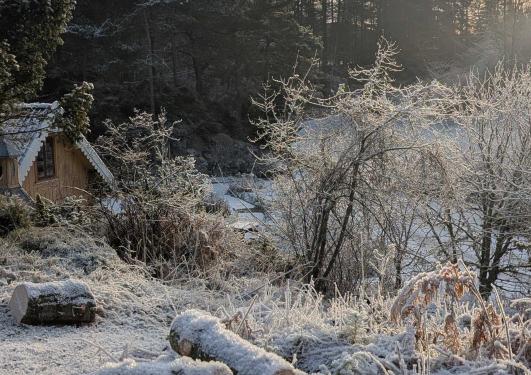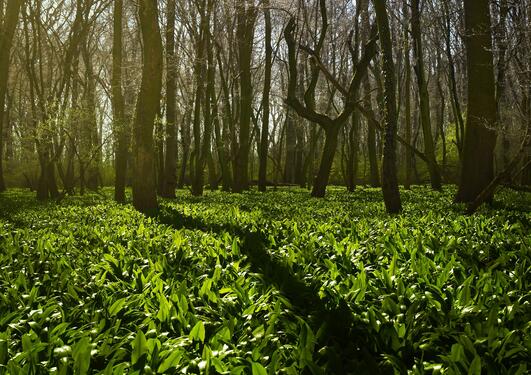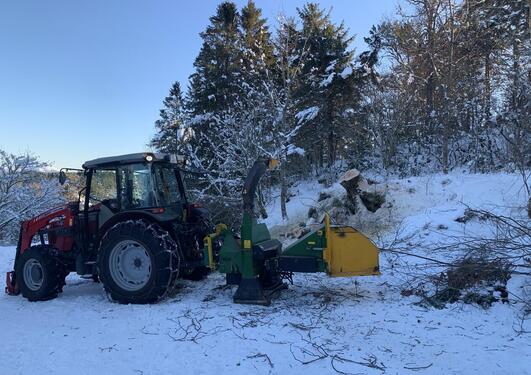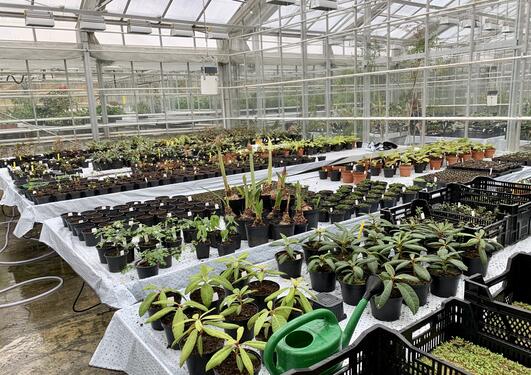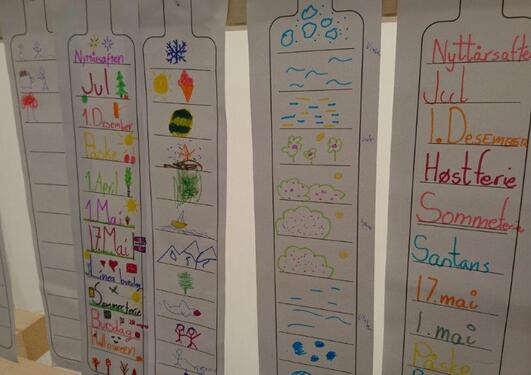In tune with seasonality
It's noisy in the gardens, and the melody of birds, chainsaws, ice and robots keeps harmony with the seasonal rhythms of the gardens.

Main content
But what if this seasonal music goes out of tune?
Scholars writing on time note that in bygone eras people told time aurally, whether waking with the crowing rooster or listening for the chiming church bells over the workday. Working alongside the university gardeners, I've come to recognise certain sounds that mark out the year.
On my second day, in late January 2021, we went out clearing felled trees in the dark subzero of winter. My first impression was of the immensity of silence in the forest. But then my ears attuned to the crunch of snow under foot, the buzzing heater in the buggy, and at some point the gardener and I stopped when we heard a ticking coming from some bristling icicles. Not long after, we ruptured winter’s silence with the whine of the chainsaw and the woodchipper; typical noises over that time of year.
By late March, we began to suspect Spring was coming. I asked a gardener what signs she used to tell Spring’s approach, and she said that it was the sound of birds in the daytime and owls at night. Bees too. As Spring came on in earnest, and the rhododendrons bloomed, there came the sounds of more life. Some of these sounds came from visitors; barking dogs, playing children, and the murmur of groups on tours. But some of the sounds were associated with managing the weeds that started to sprout. I noted the hum of the heat weeder.
June sounded like lawnmowers and weed whackers. I spent a good deal of June with earmuffs on, listening to mowers cough themselves to life, or sputter out with an empty reservoir. But there were also the robot mowers, who would sneak up on me with their subdued whirr while I was working in the mini-arboretum.
By October, two main sounds stand out in my notes; the flicking noise of raindrops ricocheting off the hood of my raincoat, and the constant bubbling sound of the drains. But there was one sound that took me by surprise. As Covid restrictions lifted, and air travel started to increase, I started to hear with more frequency the planes approaching Flesland airport.
It goes to show how seasonal music can vary and change.
Humans are dramatically altering the seasonal sounds of our environments. Rachel Carson, in her classic exposé "Silent Spring", revealed the dangers of poisons like DDT for our ecosystems, and dreaded a spring devoid of birdsong.
More recently, in Aotearoa New Zealand, a CALENDARS project collaborator told of how Maori could distinguish seasons in the bush by birdsong, according to the migration of birds or which birds called out loudest in certain periods. Maori made instruments, like nose flutes, that imitate some of these birds. But with decreased native bush and increased predators, seasonal birdsong is dwindling. All that is left are the flutes.
This is the sixth blog post from Dr. Scott Bremer doing fieldwork in the University Gardens. You can read the other blogs here.
